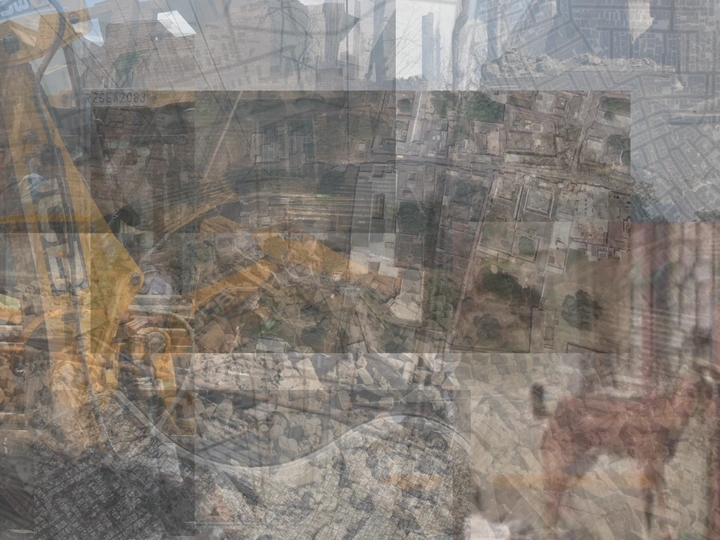Settlerscapes and Rubble Assemblies

Shivangi Mariam Raj is a writer from Delhi/Uttar Pradesh, India. As an independent researcher, she is interested in visual cultures of majoritarian violence across South Asia, language as the site of caste apartheid in India, and spectral temporalities as forms of resistance in Kashmir. She utilises essays, poetry, and reportage for individual memory to coalesce into a broader inquiry of the politics of public remembering. Her practice combines approaches in sociolinguistics, soundscapes, photography, counter-cartographies, translation, and ethnography. Her writings have been widely published in local and international publications, and translated into French, Spanish, Urdu, Punjabi, Tamil, Hindi, and Georgian.
In 2013, she was awarded the Commonwealth Youth Exchange Grant for her documentation of the spatial dimensions of oral literature in the Jaunsar-Bawar region of Uttarakhand, India. She is a university drop-out and was previously working with Oxford University Press. She is the 2024–25 Editorial Fellow for Logic(s) Magazine at INCITE Center of Columbia University as well as the recipient of Graham Foundation's 2024 Grant for Research for her project, "Shadow Thresholds: Architectures of Ruin in India."
She works with The Funambulist, a platform dedicated to the politics of space and bodies.
In India, Muslim lifeworlds are being increasingly rendered precarious with punitive demolitions that threaten to expel them from their past and curtail all possibilities of a future with dignity, thereby precipitating their political erasure. Against multiple topographies of segregation, the built environment is being weaponised with rubble becoming a careful, calculated assemblage to “cleanse” the landscape of those who are considered a spatial burden, an existential blemish. However, this architecture of ruin was long perfected in Indian-Occupied Kashmir, where settler-colonialism, colonialism, and occupation offer three distinct, yet simultaneous frameworks to analyse spatial subjugation. Land grabs, destruction of homes—by bulldozers, by prohibited chemical weapons, by arson—forced evictions in remote forests, and transforming the meaning of everyday sites such as schools and hospitals constitute acts of spaciocide. Large tracts of land, including agricultural patches, parks, and ecologically fragile areas, have been stolen from the locals to build army camps, bunkers, military drill points, and artillery firing ranges. Railway, electricity, and roadway infrastructures pierce through fields and orchards, deploying “development” as a rhetoric for resource extraction and legitimising India’s presence in the occupied land.
In refusing the spectacle of minoritised/colonised body in death as a prerequisite for addressing political violence, my research establishes space itself as the evidence. By reformulating the relationship between architecture, conflict studies, counter-cartography, and ethnography, this political genealogy of debris evinces how ethnonationalist statecrafting is invariably connected with and dependent on colonial continuities. It also uncovers how the modern nation-state is simultaneously weaponising ecology to dispossess the minoritised and the occupied body, and in the act of inflicting spatial injuries, compounding environmental violence.